The simplest gauge of Vincent O’Brien’s impact on the sport of racing, and the bloodstock industry behind it, is how his influence is stamped all over it. Not just in Ireland or Britain or the rest of Europe. But anywhere in the world.
The towering legacy of the little genius from Co. Cork, and the horses he trained, is how the game looks, operates and behaves around the globe. Much of its standards and measures of achievement, no matter where, or in what shape or form, contain his influence.
Getting to the red lollipop faster than anyone else has always been racing’s most fundamental element. The pursuit of that objective consumed O’Brien like no one else. The pursuit transformed much of the process as well as something even more fundamental.
Ireland is renowned worldwide as for the excellence of its thoroughbreds and the people around them. It’s a reputation taken for granted now as some automatic heritage. In fact it is a much more modern creation and one inextricably bound up with the man born in Churchtown on April 9th, 1917.
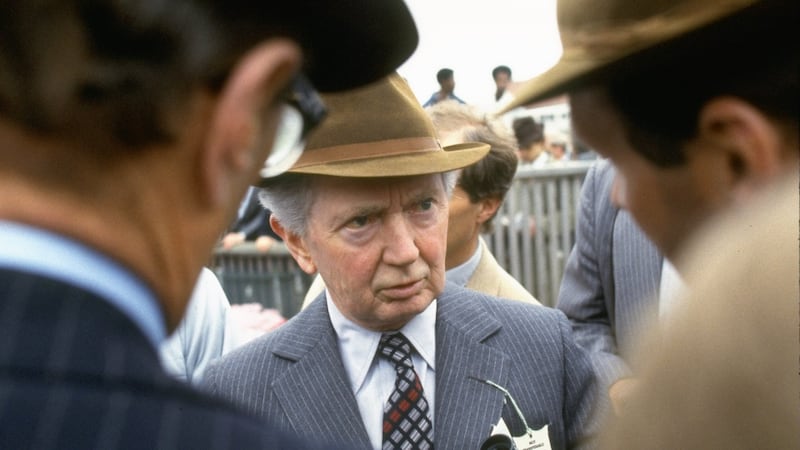
Just a decade earlier a horse called Orby, owned by the infamous Irish-American Richard ‘Boss’ Croker,’ created a sensation by winning the Epsom Derby.
The fact Orby was trained in Ireland had been enough for many in the English turf establishment to discount him completely. Irish horses were good for hunting, point to pointing, or maybe even carrying soldiers into battle. But not for the serious business of elite racing.
The attitude was summed up at the time with an infamously haughty line in the Sportsman newspaper - “The turf in Ireland has no spring in it, the climate is too depressing and no Irish trainer knows enough to even dare compete for the greatest race in the world.”
That frame of mind didn’t disappear with Orby’s 1907 victory. Neither did independence stop Irish racing being England’s impoverished relation, a useful adjunct but not to be seriously considered for the training of champions.
Changed perceptions
When Vincent O’Brien started training on the family farm in 1944 he began a 51-year career that changed such perceptions forever.
In a fretful young state struggling to come to terms with its identity, and often opting to turn in on itself rather than confidently striking out, the farmer’s son’s horizons were notably wide-ranging from the off.
From the countryside that gave the world steeplechasing in the first place O’Brien quickly made his mark on National Hunt racing.
In 1948 Cottage Rake won the first of three Cheltenham Gold Cups. Knock Hard also won it in 1953. That same year Early Mist was the first leg of a scarcely credible feat as O’Brien won three Aintree Grand Nationals in a row, a streak completed by Royal Tan and Quare Times.
Hatton’s Grace won three Champion Hurdles in a row as well and from the start there was a breadth of ambition and a willingness to test the boundaries that was unique in the Ireland of that time.
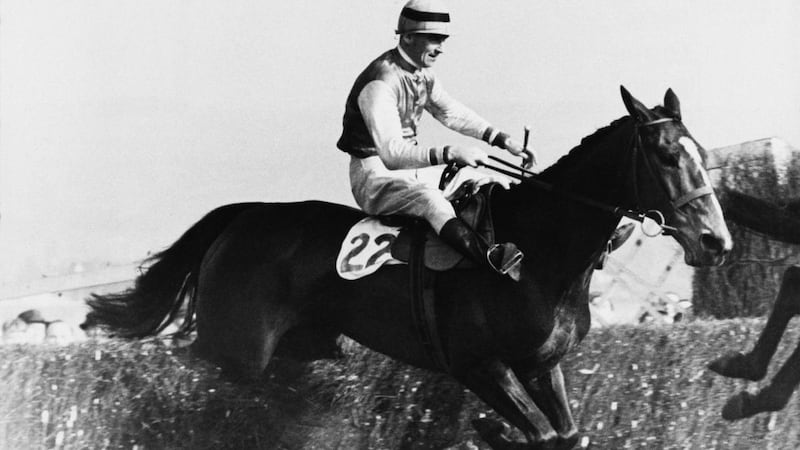
When horses were mostly transported by train or ferry, O’Brien instead used a plane to fly Cottage Rake and Hatton’s Grace to Cheltenham. It was an old RAF transport and a shuddering contrast to the deluxe international horse transport planes of today. But O’Brien pioneered it.
Within a decade he was the most successful jumps trainer on the planet, helping to create a national obsession with the Cheltenham festival that has only intensified over time. But the National Hunt world is a narrow one, mostly confined to Ireland, Britain and France, and with an ownership base to match.
Flat racing is global and so was O’Brien’s vision as he started to carve out the now iconic Ballydoyle base from farmland near Cashel in Co. Tipperary.
As early as 1953 the legendary BBC commentator Peter O’Sullevan wrote for the Daily Express: “It is not in accord with tradition for classic winners to be trained in Tipperary but I am fast developing the opinion that with Vincent O’Brien, one of Ireland’s youngest trainers, almost anything is possible.”
By then there were already a pair of Irish Derby wins under O’Brien’s belt but in international terms it was still a second-rate race. He had already though calculated that securing the best young raw material to compete abroad required deep pockets and turned to Irish-America to find them.
Businessman John McShain, famously ‘the man who built Washington,’ owned O’Brien’s first truly top star on the flat. Ballymoss finished runner-up to Crepello in the 1957 Epsom Derby but won that year’s St Leger. In 1958 he was a champion, landing the King George and France’s greatest race, the Prix de l’Arc de Triomphe.
In 1962 Larkspur, carrying the colours of the US ambassador to Ireland, Raymond Guest, landed the first of O'Brien's six Derbies at Epsom. Half a dozen years later the same colours were worn by Lester Piggott as Sir Ivor added the Derby to 2,000 Guineas glory.
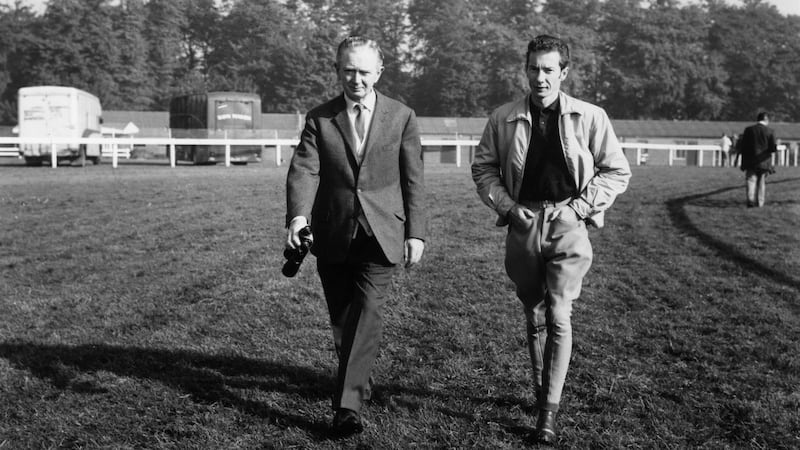
Sir Ivor had spent the previous winter in Pisa in Italy where it was hoped sunshine might be an advantage to his classic campaign. The results suggested it didn’t hurt. Decades later the tactic of spending winters in the sun was at the heart of Sheikh Mohammed’s strategy for his immense Godolphin operation.
By then O'Brien wasn't alone in having transformed international perceptions of Irish racing. Paddy Prendergast was also a champion trainer on the flat in both Ireland and Britain, a feat only achieved since by the modern maestro of Ballydoyle, Aidan O'Brien.
Cultural horizons
In 1960’s Ireland these were both rare and glamorous accomplishments in a country only starting to tentatively expand its economic and cultural horizons.
But there was restless and relentless ambition to ‘MV’ O’Brien that made him a unique figure. Quiet and reserved by inclination, his ‘eye’ for a horse was already world renowned. It had some of the world’s richest owners queuing up to train for them. And in 1968 came an epochal encounter.
The American industrialist Charles Engelhard - apparently the figure Ian Fleming based the eponymous figure 'Goldfinger' on - invited O'Brien to Canada to examine a yearling by the stallion Ribot. The Irishman didn't like him. But he asked if there were any other youngsters to look at. Suddenly his eye was filled with an imposing colt by Northern Dancer.
The 1964 Kentucky Derby winner was a new stallion whose progeny were unproven. O’Brien didn’t care. By now he was buying regularly at the top US sales. He urged Engelhard to buy the yearling. The colt cost $84,000. That purchase set in motion a dynasty that revolutionised the buying, breeding and racing of racehorses around the world.
Named Nijinsky, the Northern Dancer horse became one of the all-time great champions, winning a first English Triple Crown in 35 years - still the last horse to do it - while also becoming a byword for equine elegance and class. Even half a century later images of Nijinsky and Piggott at their peak continue to represent a racing ideal.
It was Nijinsky’s success that propelled Northern Dancer to became the most influential sire in history. Nijinsky was just one of a collection of his sons that became hugely influential sires in their own right, horses such as Danzig, Lyphard, Nureyev and Sadlers Wells. These bloodlines are pervasive throughout world racing today.
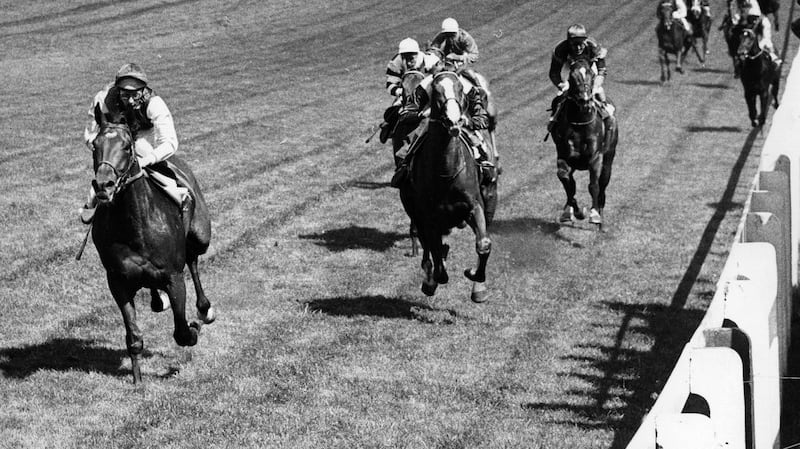
Any presumption that would have happened anyway fails to take into account how Nijinsky needed all the skill and patience of O’Brien and his hand-picked staff at Ballydoyle to fulfil his potential. A fragile temperament meant he needed kid-glove treatment. He could easily have soured and never been heard of.
There is also danger in presuming any inevitability about how that Northern Dancer influence helped make Ireland a global leader in the breeding of thoroughbreds.
A syndicate formed in the mid-1970s with Englishman Robert Sangster and O'Brien's son-in-law John Magnier had a simple formula. Buy regally bred US yearlings, turn some of them into champions on the track and syndicate them to stand at stud in Ireland where income from stallion fees was tax-free at that time.
Thus the roots of the Coolmore Stud empire were planted close to Ballydoyle near Fethard. Under Magnier’s direction it fundamentally altered the bloodstock business. Stallions now shuttle between hemispheres, bringing bloodlines around the globe that previously would have been restricted.
Famous eye
Ultimately all of it was rooted in O’Brien’s famous eye. He spotted the untapped talent, moulded it in Ballydoyle and passed the baton to Magnier. Sadlers Wells became a spectacular example, a son of Northern Dancer who reigned over European racing through the 1990s and beyond. Now his own son, Galileo, is top of the pile at Coolmore.
It’s evidence of how the formula has been continued for more than 20 years by Aidan O’Brien who has rewritten racing’s record books since being employed by Magnier. The new master of Ballydoyle is a maestro of his trade and a statistical phenomenon. ‘AP’ has even eclipsed ‘MV’ in Epsom Derby victories. But in legacy terms there’s no eclipsing his predecessor.
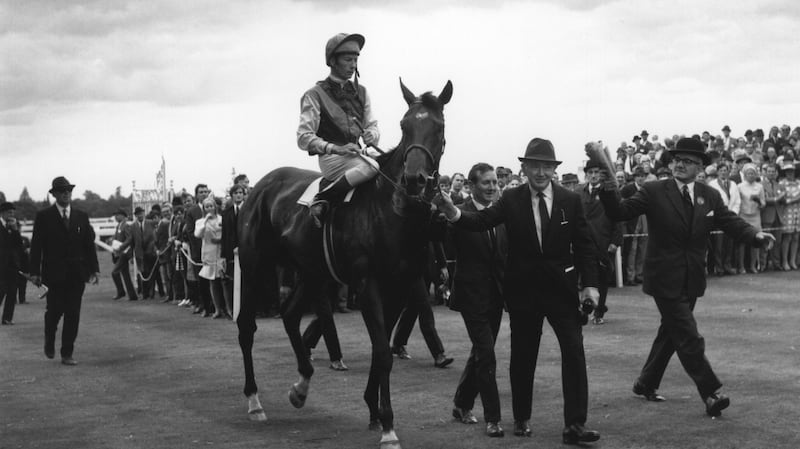
It’s why in 2003 O’Brien was voted the greatest influence in horse racing history in a worldwide poll conducted by the Racing Post. 20 years previously O’Brien was awarded an honorary doctorate by the National University of Ireland in recognition of his achievements which include a fulcrum role in the internationalisation of the sport.
At home the breadth of Ireland’s modern status as a global leader in the racing and breeding of thoroughbreds is concrete evidence of Vincent O’Brien’s seminal influence. He was the visionary, the original talent, upon whose giant shoulders today’s industry stands on.
On his death on June 1st, 2009, his brother, Phonsie, described him as “a brilliant man, single-minded, and didn’t care what people thought of him.” Such is often the way with those capable of shaping a country’s idea of itself and altering the course of history.




















